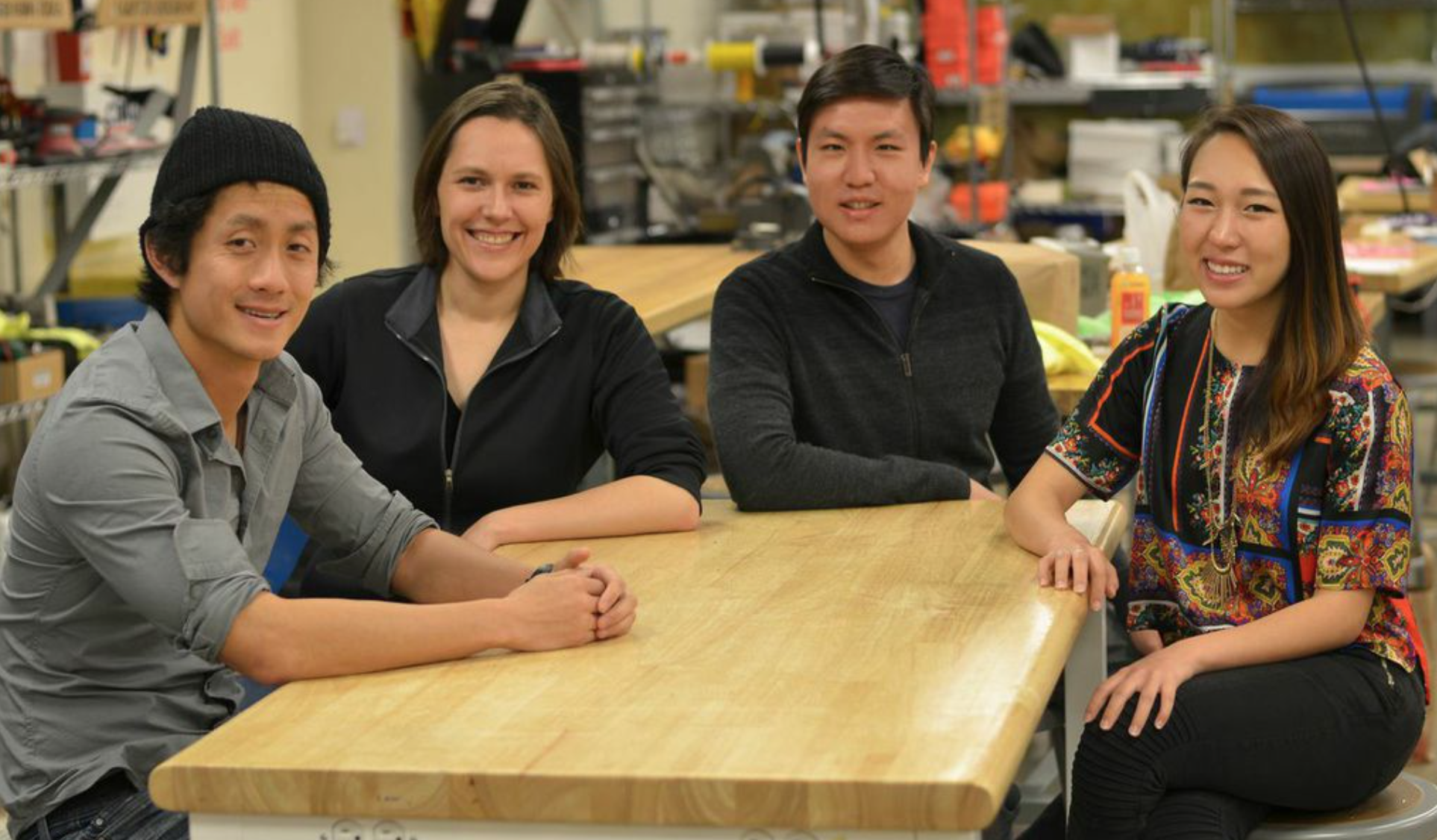Finding a vibrator can often feel like a real-life tale of Goldilocks—you want equipment with the right intensity, a good battery life, and maybe a few different settings for different kinds of stimulation. A Berkeley, Calif. startup wants to simplify the process and has developed a programmable vibrator with sensors and an app.
SmartBod is the brainchild of a couple—one an engineer and the other an art student with a women’s studies background—now based at UC Berkeley. It’s a “smart,” internal/external stimulation vibrator that tracks arousal with a variety of embedded sensors then transmits data to a smartphone app. CEO Liz Klinger said she was inspired to create a more advanced vibrator while hosting passion parties, a kind of Tupperware party for sex toys.
“There were many women who would pull me aside and ask questions. The one that stuck with me the most was a bride-to-be that had never been able to orgasm through intercourse and hadn’t told her husband about that. She wanted advice and to know some products she could use,” Klinger said. “What we started seeing more, especially as we started working on SmartBod, is there’s a need to learn about our bodies more.”
The Arduino-based platform uses temperature, moisture, and pressure sensors to track arousal time, time to orgasm, and when sex would feel best based on a variety of factors. The vibrator has a small amount of on-board memory and connects to a smartphone over Bluetooth; it runs on rechargeable batteries with an approximately 45-minute battery life.
“Considering all the taboos and stigma around the topic [of sex], we don’t have vocabulary to talk about it. If you’re able to throw up a chart, that’s helpful,” CTO James Wang said. “Different people are more aroused or less around at different rates in different times. There’s not a simple linear function for almost anyone.”
A Multi-Billion Dollar Market

While there are several smart vibrators in the multi-billion dollar adult toy market, SmartBod’s biggest selling point its programmability based on the data gathered. Wang hopes users will be able to program their vibrator based on stats around menstrual cycle, stress, exercise, and diet. SmartBod is anonymously calibrating that data in beta testing, but hopes to partner with fitness apps or menstrual trackers to paint a more complete picture of the factors that affect arousal.
The SmartBod team, which includes engineers from Google X and Amazon, has been working with sex researchers to develop its product. They’ve constructed approximately 50 prototypes which have been 3D printed at UC Berkeley’s startup labs and accelerators, then tested on a rotating group of about 10 people. They’ve received a number of awards and won challenges, including California Institute for Quantitative Biosciences Biotech challenge, and took second place in the 2014 South by Southwest business idea challenge.
“The before and after in terms of response [from testers] has been pretty interesting. After, people usually have so many questions of what else they can try, what they can do. It opens up a whole new way to looking at your own sexuality,” Klinger said.
The team hopes to reinvent the way vibrators are marketed and sold as well, with the goal of destigmatizing sex toys. Most vibrators—even those at sex-positive, female-oriented shops—are subtly marketed to men, often showing the device held in a fist that assumes the vibrator will be used on a partner instead of yourself. The subtle marketing may be working, according to data journalist Jon Millward— analysis of a leading London sex toy supplier found that 1 in 5 men would purchase a male sex toy, compared to 1 in 20 women.
“A lot of these vibrator companies’ approach is bigger is better. We’re trying to be very women-centric and approachable, so it will be smaller than a lot of other ones. A lot of people find very substantial vibrators more intimidating,” Wang said.
Smartbod will not be shaped like a veiny penis or an animal, Klinger added, and it will have a more ergonomic handle designed with self-use in mind. The SmartBod app will also have a community board component, where users can anonymously ask questions or share tips.
Sextech’s Marketing Problem
Still, many women-centric sex shops and devices are marketed to straight, cisgender people with money to burn. Tech pundit and developer Myriam Joire, who identifies as queer and worked at a sex toy startup 15 years ago, said there’s a serious lack of mainstream marketing to the LGBT community.
“There’s probably some room for people to market things in less of a gendered focus,” Joire said. “The way I navigate the world is I know what I like, what kind of people I like, and I base [attraction] on that. I look at my sex toys that way too. I don’t care who it’s intended for.”
Joire speculated that sextech is more likely to break in the queer community because, “we’re more playful with our sex and have more money to spend—especially the men.” SmartBod is designed for anyone with a vagina, and while that may eliminate some interested buyers, Klinger hopes that the vibrator’s programmability will be popular with sex therapists, post-menopausal women, those with vaginismus or other sexual challenges.
SmartBod also hopes to find a work-around to purchasing a vibrator in traditional sex shops, which net approximately $1 billion in yearly sales. “We’re trying to make this an experience that’s more comfortable than what most sex toys and sex shops offer,” Wang said, adding that SmartBod could be sold in athletic shops if the branding is right.
Creating a non-traditional distribution model and finding a good manufacturer are tall orders, and SmartBod will begin a crowdsourcing campaign to help fund its 2016 launch.
“I think a lot of why sextech hasn’t reached critical mass is economics and economics are dictated by perceptual and societal norms that are being broken by a few, especially in the Bay Area, but not enough,” Joire said.